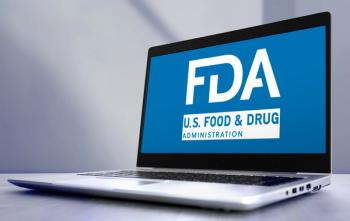
Two-Way Communication Connects HCPs to Reps in the Moment of Need: Q&A with Dan Rizzo, Veeva Business Consulting
HCPs are utilizing new ways of communicating with reps, according to new data.
New data from Veeva Pulse examines the ways that healthcare professionals (HCPs) communicate with biopharma reps, and how they view in-person meetings compared to virtual meetings. Dan Rizzo, vice president of global business consulting at Veeva, spoke with Pharmaceutical Executive about these trends.
Pharmaceutical Executive: It’s fair to say that field effectiveness requires communicating on HCPs’ terms. How would you characterize the terms right now?
Dan Rizzo: Agreed; it’s ideal to respond to HCPs the moment they’re seeking information, but traditional push models haven’t accommodated this approach. There’s an urgency now considering that more than half of life science’s R&D spend is on specialty medicines, and about 70%1 of medicines in clinical development are potential first-in-class treatments.
HCPs encounter a significant number of hurdles before they can even initiate a patient’s treatment using a specialized therapy. It’s never been more important for reps to help HCPs navigate the maze of treatments, which will require two-way communication. Getting information and answers to HCPs means connecting on their time and terms — whether in-person or by video call, phone, email, or chat.
Reps can help HCPs keep the focus on patients by making every connection a valuable one. Organizations can support their field teams by using digital channels like compliant chat. Taking this type of service-focused approach prioritizes HCPs’ needs above the status quo and offers them more on-demand and dynamic interactions.
PE: What does the data reflect about in-person meetings?
Rizzo: We know that HCPs are more selective than ever before about engaging with field teams, and most meet with a maximum of just three biopharmas. In-person meetings are still an essential way for reps to build trust, and they serve as the foundation for deepening relationships. But when reps can’t be in the same room with the HCP, addressing their needs quickly can strengthen relationships to make face-to-face meetings more productive. For example, reps can respond to email or chat in less than five minutes to answer questions or send content or samples, well before a scheduled meeting. Staying connected with HCPs between in-person meetings keeps reps top of mind when the HCP needs assistance.
Perhaps the most important finding in Veeva Pulse data is that offering on-demand interactions isn’t diluting the number or importance of in-person meetings. In fact, the report shows that adding inbound channels to traditional outbound messaging doubles the total volume of interactions while keeping in-person frequency the same or increasing it.
PE: Is chat in particular the future of two-way engagement?
Rizzo: HCPs are increasingly pulling reps in for support via chat and are initiating just under a third of conversations with reps through this channel. When compliant chat is available, the channel goes from 1% to 15% of total communication. It’s fast and familiar for many HCPs who might need guidance on anything from initiating treatment for a patient, to reimbursement support, to help with site certification. And HCPs read their chats: U.S. reps see 80% content read rates for chat compared with about 40% read rates for rep-sent emails. Other regions could see similar success with compliant chat.
I’ll add that video remains strong: data from
PE: What’s the key takeaway from the latest data on engaging with HCPs?
Rizzo: It's significant that HCPs are seeking immediate access to resources instead ofwaiting for emails or meetings, but it’s not surprising in our service-oriented, on-demand world. Giving HCPs an inbound channel to reach out in the moment of need, and in the ways they’re most comfortable with, leads to twice the amount of digital engagement while maintaining or increasing in-person meetings.
Adding digital channels will not hurt field teams’ ability to be in-person. It’s the opposite: You’ll be adding speed and value in serving HCPs and increasing engagement opportunities. Digital touchpoints now become the glue that helps cement relationships and sets you apart from the rest.
References:
(December 6, 2021); PhRMA; Innovation in the Biopharmaceutical Pipeline; https://phrma.org/en/resource-center/Topics/Innovation/Innovation-in-the-Biopharmaceutical-Pipeline
Wolf, Friedemann: Schulze, Ulrik: Shah, Suchita: D’Avanzo, Ivan: Moeckel, Friedrich: Lago, Enzo; (April 9, 2023); BCG; For Physicians and Pharma, Hybrid Engagement Is the New Normal; https://www.bcg.com/publications/2023/hybrid-engagement-is-the-new-normal-for-physicians-and-pharma-companies
Newsletter
Lead with insight with the Pharmaceutical Executive newsletter, featuring strategic analysis, leadership trends, and market intelligence for biopharma decision-makers.





